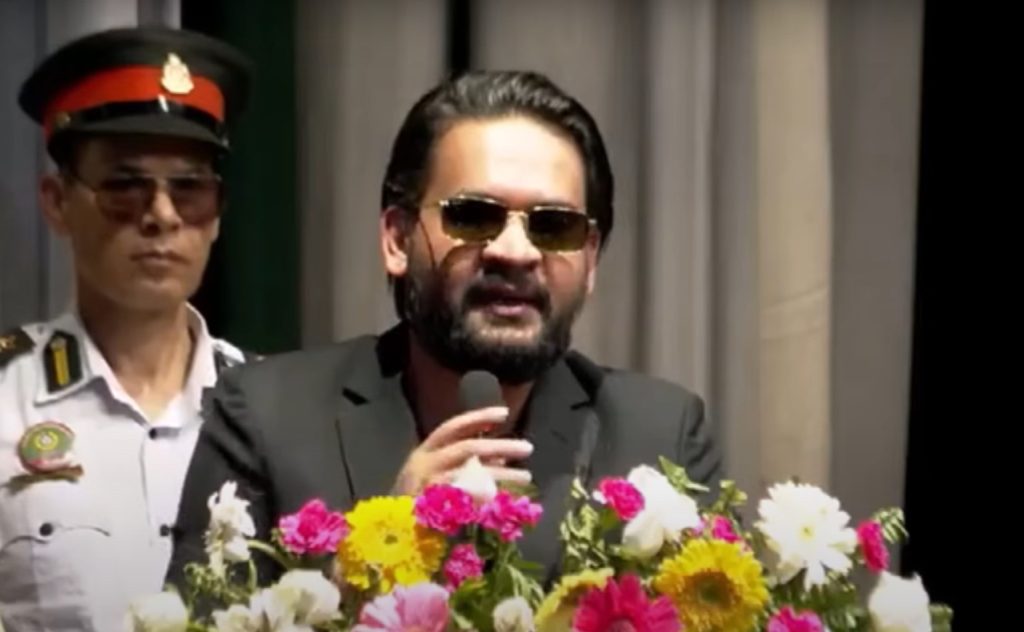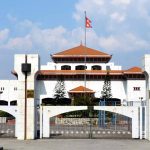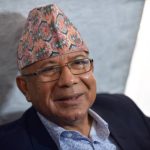
Kathmandu Metropolitan City Mayor Balen Shah has clarified that fire engines could not reach Singha Durbar immediately after the fire broke out due to road blockades caused by protesters.
In a social media statement on Tuesday evening, Shah said the city’s fire trucks managed to arrive at Singha Durbar at 8:15 PM once the protest crowd began to disperse.
“Even though we tried to send the fire trucks immediately after the fire started, the vehicles couldn’t move due to the protesters’ blockade.
Even the Nepal Army’s fire truck stationed inside Singha Durbar couldn’t operate because the mob wouldn’t let it work. Once the situation calmed slightly, Kathmandu Metropolitan’s fire engines reached the site at 8:15 PM on September 9,”
said Mayor Balen Shah.
Five Fire Trucks and 44 Personnel on Duty
According to Shah, Kathmandu Metropolitan City currently operates five fire trucks — two in New Road, two in Balaju, and one in Ramhiti.
A total of 44 personnel, including 14 city police and 30 armed police, work in three shifts to operate them.
Each truck is manned by three operators per shift, he said, adding:
“On September 8 and 9, fires were not limited to Singha Durbar or Kathmandu — the entire country was burning.
Regardless of where structures were on fire, it is our moral duty to protect them.”
Responding to Public Criticism
In his statement titled “Where Was Kathmandu’s Fire Brigade?”, Shah addressed widespread questions and accusations circulating online:
“Some are asking, ‘Where was Kathmandu’s fire truck when Singha Durbar was burning? Did Balen just watch it burn for three days?’
Others are falsely claiming that I set the fire myself. Although such allegations don’t deserve answers, every citizen has the right to seek information through the Right to Information (RTI) Act. Still, I am addressing these false claims publicly to clear the record.”
Shah reminded the public of the chaotic condition on September 9, saying that the entire nation was in turmoil — there was no functioning central government, no effective security force, and vehicles or even pedestrians could not move freely due to the unrest.
Despite these challenges, he said, his team worked day and night to extinguish fires, treat the injured, manage food and logistics, arrange medical staff, organize blood donations, handle the deceased, collect damage data, and coordinate with security and government agencies.
Firefighting Timeline and Locations
Mayor Shah provided a detailed timeline showing where Kathmandu’s fire trucks were active between September 8–14 (23–28 Bhadra 2082):
- Sept 8 (1:30 PM–5:00 PM): Fire at Parliament Building – New Road and Ramhiti units deployed.
- Sept 8 (Afternoon): Fire at Sundhara and Shantinagar electric poles – New Road truck deployed.
- Sept 9 (8:00 PM–1:00 AM): Fires at Bishal Bazaar, Janasewa Police Circle, Himalayan Bank, and Rastriya Banijya Bank, Baneshwor – trucks from New Road, Balaju, and Ramhiti responded.
- Sept 9 (8:15–9:45 PM) and Sept 10 (1:45–3:00 AM): Fire suppression at Singha Durbar.
- Sept 11 (12:20–1:30 PM): Fire at Parliament Building.
- Sept 11 (3:30–4:30 PM): Fire at the Commission for the Investigation of Abuse of Authority (CIAA), Dilli Bazaar Prison, and nearby areas.
- Sept 12–13: Fire at Supreme Court premises, with vital documents preserved.
He added that between September 8–14, Kathmandu fire trucks were dispatched over 55 times to various sites, including:
District Court Kathmandu, Department of Transport Management, Department of Urban Development, Ncell Data Center, Thapathali Data Center, Grandi Hospital warehouse, Hilton Hotel Naxal, and multiple Bhatbhateni branches — often in coordination with the Nepal Army.
Medical and Humanitarian Support
Shah also detailed that the Metropolitan City coordinated with hospitals before the federal government’s announcement, ensuring free treatment for the injured.
They managed medicine supplies, blood donations, free meals, and temporary lodging materials for patients and caretakers.
In several hospitals, Kathmandu Metropolitan City police even signed consent forms as guardians for patients undergoing surgery who had no family present.
“We managed transportation, lodging, and meals for the families of the deceased.
In cooperation with the Nepal Army, we even helped deliver bodies to their homes,”
Shah wrote.
Appeal for Truth and Responsibility
Concluding his statement, Mayor Shah urged citizens to remain calm and avoid misinformation:
“Dear parents, brothers, and sisters — your concern is natural.
But please be cautious of analysts and rumor-spreaders who make claims without data or facts.
False news only spreads fear and demoralizes our rescue teams.
Media friends — please verify the truth before publishing anything. Citizens deserve accurate information.”
He added that the city’s team worked tirelessly, risking their lives, not for praise but out of duty:
“We don’t seek credit — just recognition for those who worked to put out fires, treat the injured, and feed the suffering.
Together, let’s build a safe, aware, and humane society.
What our nation needs now is unity and truth, not rumors and lies.”










